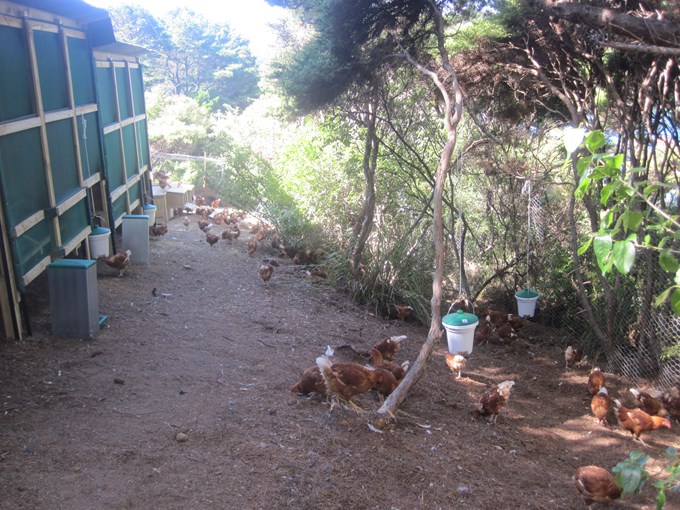Aucklanders are buzzing over a dramatic showdown between team chicken and team skink.
The unusual battle in the animal kingdom began when a flock of 200 domestic chickens were released on Aotea Great Barrier to hunt down the plague skink population.
The plague skink poses a serious risk
The plague skink, formerly known as the 'rainbow' skink, is an Australian species that’s found its way across the Tasman and is now a pest in the North Island.
As the name suggests, this little brown skink has rapidly reached ‘plague-like’ proportions throughout much of the North Island and while it’s occasionally observed to shine like a rainbow, it doesn’t lead to any ‘pot of gold’, just a whole lot of trouble for our native skinks.
Discovered at a single site on Aotea Great Barrier in 2013, they have spread rapidly and are now threatening the native lizard populations as they compete for food and habitat.
The skink poses a serious risk to Aotea Great Barrier’s local ecology and with other pristine islands including Hauturu a mere stone’s throw away, the potential for them to spread further afield is very real.
Auckland Council and the Department of Conservation are mid-way through an innovative twelve-month trial to test whether it’s possible to wipe out plague skinks from Shoal Bay, Aotea.
TVNZ Breakfast’s Jack Tame chatted to the project managers of the trial, Jacqui Wairepo and Dr Jamie MacKay:
Biosecurity manager Phil Brown appeared on The Project to chat about how they've trained the chickens to hunt down the skinks.
Chickens to the rescue?
A range of methods is being tested to manage the invasion with the chicken release being one of the more unusual experiments. As known predators of skinks, the chickens have been released into a 0.3ha fully fenced management area.
Prior to their arrival, native skinks were cleared from the area, leaving the enclosed population of plague skinks as easy pickings for the chickens.
Project Manager Jacqui Wairepo is excited by the experiment. “It’s great to be trialling a new method; invasive reptiles are becoming increasingly problematic on a global scale and, to my knowledge, there has never been a successful eradication of a small, cryptic skink in the world.”
“This means the work we’re doing out on Aotea Great Barrier is significant on both a national and global scale. It’s vital we look at novel and creative ways of dealing with these invaders so we can better protect our indigenous populations, already under threat from habitat loss and pests.”
The project management team is being guided by a panel of biosecurity specialists, several of whom have been involved in other international projects dealing with invasive reptiles.
The new ‘biosecurity chickens’ were set to work in early December 2017, in compliance with animal welfare and husbandry legislation and accompanied by ongoing surveillance.
As the chickens and skinks square off, only time will tell who will emerge victorious.
If the experimental trial methods are assessed as being successful, it will be recommended the project formally launch into a full eradication programme, taking an estimated five years to complete.


